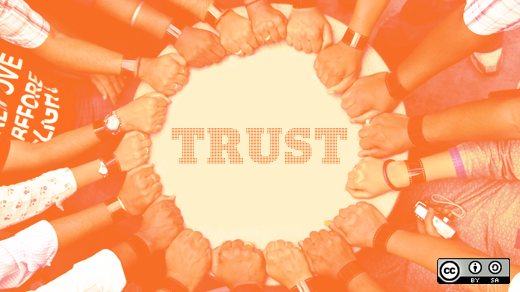In Zen Buddhism the concept of Shoshin, or "Beginner’s Mind," teaches us to approach learning with openness and a lack of preconceptions. Zen Monk and teacher, Shunryu Suzuki famously wrote: "In the beginner’s mind there are many possibilities, but in the expert’s there are few." When we cast aside that which we think we know, or that which we believe to be true, we can embrace new insights and ideas. As we climb to levels of expertise in our careers and work, we sometimes disconnect from the intense experiences of unknowing and the creative discovery inherent in being a novice.
Children wholly embody a beginner’s mind and naturally exhibit an inquisitiveness and passion to explore the world around them.
They are natural hackers, as evidenced by elementary students describing in glee how they manipulate and mod Minecraft, trick out games via cheat codes, and jailbreak iPods. Unimpeded by assumptions of what technology should do, or a fear of failure, children push forward into a realm of possibility, invention and exploration. As a technology and education leader in a public K-12 school district, my role is to design a learning environment where openness, creativity, and opportunity is offered to every child. I'm also fortunate to be part of a team who values the open source philosophy and embraces educational software freedom.
For over a decade, open source has permeated all areas of our district operations, infrastructure, and classrooms. We have introduced open source software and ideals to our students, parents, teachers, and community through a variety of projects and programs. Our school district has deployed the largest fleet of student Linux laptops in the state of Pennsylvania. As of January 2014, Penn Manor students regularly utilize nearly 3500 laptops and desktops exclusively running open source software. Open source is with them everyday, and an integral part of their learning.
The introduction of open source is natural; children have no preconceptions of what software should be used in school because a marketing team, teacher, or other expert tells them what to use. They simply take advantage of the available tools to solve problems, write meaningfully, and produce visible artifacts of learning. I believe that a student's curiosity and ability to explore should not be confined to a classroom or bound by a locked technology platform. As part of our high school 1:1 laptop program, all 1700 students in grades 9 through 12 are receiving Linux powered laptops loaded with a large menu of open source applications. The laptops are personally assigned to each student, used as part of their studies during the school day, and travel home with them during evenings and weekends.
Many school 1:1 programs restrict what students may do and learn with their devices. Installation or modification of software is typically restricted, often draconically, to IT personnel. This common practice cripples learning and dishonors students’ autonomy. In contrast, our program begins with a deep level of trust; student accounts are given sudo privileges and granted the liberty to install programs, spin configuration knobs, and freely experiment with the universe of open source software. Novice and accomplished students are welcomed and encouraged to learn the art of computing and pursue personal passions and interests. By starting the conversation with "We trust you," and providing an open platform for learning, we set in motion a train of student inquiry and discovery.
Everyday access to open source on the desktop helps our students experience the potency and flexibility of open source, and possibly help launch the careers of future coders, engineers, and free thinkers. Finally, education and outreach to fellow teachers, parents, and families is critical to helping novices understand the value of open source software and communities. My parent presentations and teacher professional development sessions typically begin with introductions to familiar software such as Firefox and Moodle. As I explain the merits of LibreOffice and Linux, parents commonly are intrigued by alternatives to expensive proprietary software such as Microsoft Office and Windows. Taxpayers typically react with glee when they learn that our use of Koha, Moodle, OwnCloud, WordPress, and other enterprise-class solutions provide high-quality free alternatives to costly proprietary systems and services.
Students embrace open source principles with incredible curiosity and fearlessness. Yet, I'm not exactly sure why open source software has not become wildly popular in schools. Relentless marketing by commercial vendors is certainly part of the equation. Perhaps at some point, many walk across the line of demarcation between beginner mind and expert mind. The march from open to closed plays out time and time again in educational software preference, licensing, and technology. Often, the inertia and comfort of one's expertise is difficult to overcome and can limit the desire to step forward into new territory.
As adults, as experts, how might we energize and kindle the spirit of open learning and creation? As suggested by another great teacher, we begin the thousand-mile journey with the first small step, place open options in front of our students, and watch the magic unfold.
See the full list of Youth in Open Source Week articles.







14 Comments